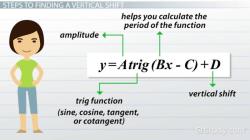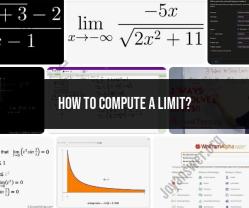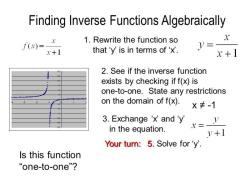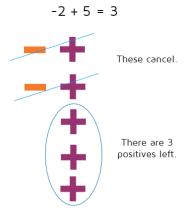What are some examples of antiderivatives?
Antiderivatives, also known as indefinite integrals, are the reverse operation of derivatives in calculus. They involve finding a function whose derivative is equal to a given function. Here are some examples of antiderivatives:
Constant Function: The antiderivative of a constant is a linear function. For example, the antiderivative of the function f(x) = 5 is F(x) = 5x + C, where C is the constant of integration.
Power Rule: The antiderivative of a power function is found using the power rule for integration. For instance, the antiderivative of f(x) = x^n, where n is any real number except -1, is F(x) = (x^(n+1))/(n+1) + C.
Exponential Function: The antiderivative of an exponential function is itself, up to a constant. For example, the antiderivative of f(x) = e^x is F(x) = e^x + C.
Trigonometric Functions: The antiderivatives of trigonometric functions have well-known forms. For instance:
- The antiderivative of f(x) = sin(x) is F(x) = -cos(x) + C.
- The antiderivative of f(x) = cos(x) is F(x) = sin(x) + C.
- The antiderivative of f(x) = sec^2(x) is F(x) = tan(x) + C.
Natural Logarithm: The antiderivative of 1/x is the natural logarithm function: the antiderivative of f(x) = 1/x is F(x) = ln|x| + C.
Sum and Difference Rules: The antiderivative of a sum or difference of functions is the sum or difference of their antiderivatives. For example, if F(x) is the antiderivative of f(x) and G(x) is the antiderivative of g(x), then the antiderivative of f(x) + g(x) is F(x) + G(x) + C.
Composite Functions: Antiderivatives of composite functions can be found using integration by substitution, a technique that involves making a substitution to simplify the integral.
It's important to remember that when finding antiderivatives, you need to include the constant of integration, represented as "+ C." This constant arises because an antiderivative represents a family of functions, and adding the constant accounts for all possible functions in that family.
Additionally, antiderivatives are often encountered in definite integrals, where you find the net area between a curve and the x-axis over a specified interval. In this context, you'll have limits of integration that define the interval over which you're finding the antiderivative.













